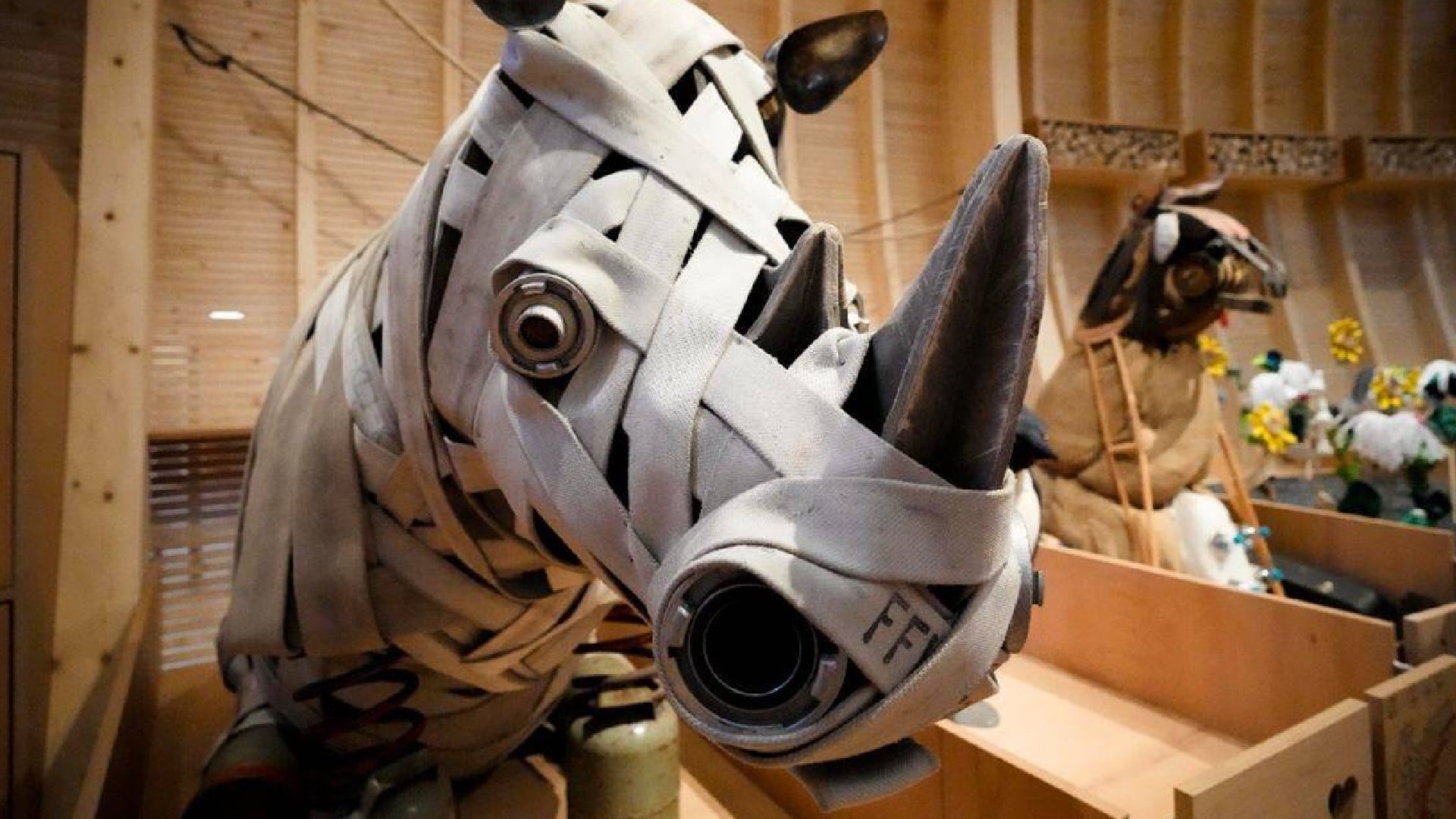The innovative children’s museum at the Jewish Museum in Berlin is greeted by torrential rain, breaking waves, and big puddles. There is no surprise there since the exhibit is dedicated to the ancient story of Noah’s Ark, which begins during the biblical deluge.
Young children are invited to participate in Noah’s journey as soon as they set foot in the innovative ANOHA Children’s World, which inaugurates Sunday. They can develop little arks that they can float on a “deluge simulator” or help rescue 150 animals, designed by over a dozen artists out of recycled material such as old spoons, espresso coffeemakers, pieces of carpet, or bike fenders. They can even use the animals’ pretend excrement — represented by brown felt balls — to fertilize plants.
You can also cuddle a sloth, explore an anaconda’s serpentine body, or rest on an octopus with yellow eyes.

The circular, wooden Ark is the museum’s centerpiece and spans 7 meters (23 feet) tall and 28 meters (91 feet) wide. At its heart is a space where visitors are invited to sit down, linger and think about life’s big universal questions: about God and the world, the past, and the future.
Toward the end of the tour, there are glimpses of the earth again, rocks peeking out of the receding floods, and a giant rainbow on which kids can write their dreams, hopes, or worries.
The ANOHA museum was built inside a previous flower market, across the street from the Jewish Museum’s main building, on a 2,700 square-meter (29,000 square-foot) space. It was meant to open in May 2020 but was postponed by the coronavirus pandemic.
At the main Jewish Museum, permanent and temporary exhibitions primarily cater to adults and teenagers, while the children’s museum caters to children ages 3 to 10.
“We tried to always welcome to the children when we created this world,” Ane Kleine-Engel, the head of the children’s museum, stated The Associated Press. “From the beginning of the museum’s conception, children were involved in the process and we plan to keep them on board as co-curators in the future as well.”

Aside from giving kids plenty of space for play and creativity, the museum also strives to teach them the importance of protecting our planet, biodiversity, and fighting climate change.
“We want the children to start imagining about big ideas, too, when they come here,” Kleine-Engel said. “When the animals get on board of the ark, they can’t choose who they like or dislike — everyone must go along to survive, no one should be left out.”
The museum additionally educates children about equality and diversity and tries to understand that racialism, antisemitism, and inequality should have no place on the Ark or in real life, Kleine-Engel added.
As a result, in a very hands-on way, children can ensure that the cockroaches, rats, and snakes also receive a spot on Noah’s Ark. They can put them on the lap of a considerable orangutan who will keep them from falling into the water.
Every animal gets a free ride on the Ark – as do the children and their parents, who also get free admission to the museum.
